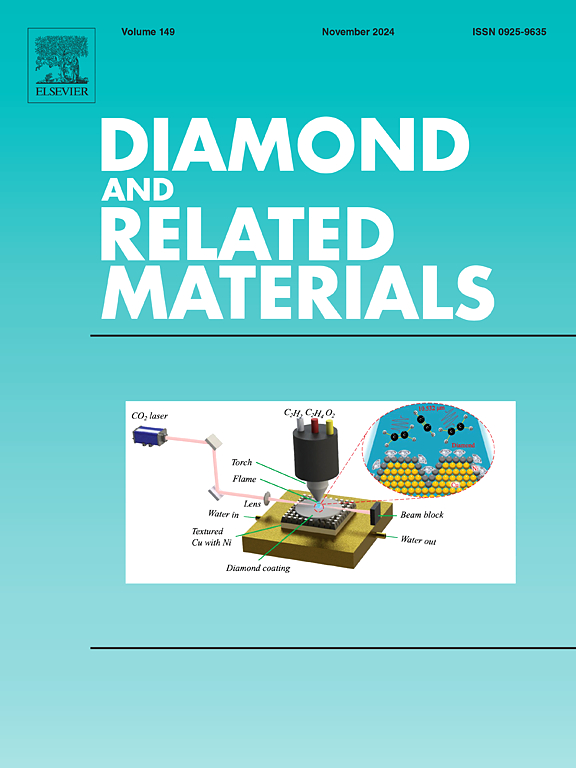氧化石墨烯/环氧复合涂层作为双重屏障:微观结构洞察卓越的耐磨和耐腐蚀性
IF 5.1
3区 材料科学
Q2 MATERIALS SCIENCE, COATINGS & FILMS
引用次数: 0
摘要
本研究探讨了通过加入还原氧化石墨烯(RGO)纳米片来增强钢表面环氧树脂涂层的耐磨性、防腐性和长期稳定性。制备了不同RGO含量(0、0.05、0.1、0.5和1.0 wt%)的RGO/环氧复合涂料,并对其进行了系统评估。其中,含有0.1 wt% RGO的涂层表现出最好的耐磨性,达到最低的磨损率(3.17 × 10−8 mm3 N−1 s−1),这是由于润滑和增强交联的协同作用。此外,0.1 wt% RGO涂层表现出优异的耐腐蚀性,腐蚀电位显著提高(Ecorr = - 0.285 V)。这种改进归因于还原氧化石墨烯在环氧树脂基体中的均匀分散和“迷宫效应”,这增强了屏障性能和界面附着力。在盐水和模拟海洋环境中进行的长期浸泡测试证实,0.1 wt% RGO涂层在10周内保持了出色的防护性能和结构完整性,明显优于纯环氧涂层。然而,较高的RGO含量(≥0.5 wt%)会导致纳米片聚集,导致微裂纹的形成和性能下降,这凸显了优化RGO含量和分散的重要性。这些发现为二维纳米材料在复合防护涂层中的应用提供了有价值的见解,并为开发高性能、耐腐蚀和耐磨涂层系统提供了实用指导。本文章由计算机程序翻译,如有差异,请以英文原文为准。

RGO/epoxy composite coatings as a dual barrier: Microstructural insights into superior wear and corrosion resistance
This study investigates the enhancement of wear resistance, corrosion protection, and long-term stability of epoxy resin coatings on steel through the incorporation of reduced graphene oxide (RGO) nanosheets. RGO/epoxy composite coatings with varying RGO contents (0, 0.05, 0.1, 0.5, and 1.0 wt%) were fabricated and systematically evaluated. Among them, the coating containing 0.1 wt% RGO exhibited the best wear resistance, achieving the lowest wear rate (3.17 × 10−8 mm3 N−1 s−1), attributed to the synergistic effects of lubrication and enhanced crosslinking. In addition, the 0.1 wt% RGO coating demonstrated superior corrosion resistance, with a significantly improved corrosion potential (Ecorr = −0.285 V). This improvement was ascribed to the uniform dispersion of RGO within the epoxy matrix and the “maze effect,” which enhanced both barrier performance and interfacial adhesion. Long-term immersion tests in saline and simulated marine environments confirmed that the 0.1 wt% RGO coating maintained excellent protective performance and structural integrity over 10 weeks, significantly outperforming the pure epoxy coating. However, higher RGO contents (≥ 0.5 wt%) led to nanosheet aggregation, resulting in microcrack formation and performance degradation, highlighting the critical importance of optimizing both RGO content and dispersion. These findings provide valuable insights into the application of two-dimensional nanomaterials in protective composite coatings and offer practical guidance for the development of high-performance, corrosion-resistant, and wear-resistant coating systems.
求助全文
通过发布文献求助,成功后即可免费获取论文全文。
去求助
来源期刊

Diamond and Related Materials
工程技术-材料科学:综合
CiteScore
6.00
自引率
14.60%
发文量
702
审稿时长
2.1 months
期刊介绍:
DRM is a leading international journal that publishes new fundamental and applied research on all forms of diamond, the integration of diamond with other advanced materials and development of technologies exploiting diamond. The synthesis, characterization and processing of single crystal diamond, polycrystalline films, nanodiamond powders and heterostructures with other advanced materials are encouraged topics for technical and review articles. In addition to diamond, the journal publishes manuscripts on the synthesis, characterization and application of other related materials including diamond-like carbons, carbon nanotubes, graphene, and boron and carbon nitrides. Articles are sought on the chemical functionalization of diamond and related materials as well as their use in electrochemistry, energy storage and conversion, chemical and biological sensing, imaging, thermal management, photonic and quantum applications, electron emission and electronic devices.
The International Conference on Diamond and Carbon Materials has evolved into the largest and most well attended forum in the field of diamond, providing a forum to showcase the latest results in the science and technology of diamond and other carbon materials such as carbon nanotubes, graphene, and diamond-like carbon. Run annually in association with Diamond and Related Materials the conference provides junior and established researchers the opportunity to exchange the latest results ranging from fundamental physical and chemical concepts to applied research focusing on the next generation carbon-based devices.
 求助内容:
求助内容: 应助结果提醒方式:
应助结果提醒方式:


